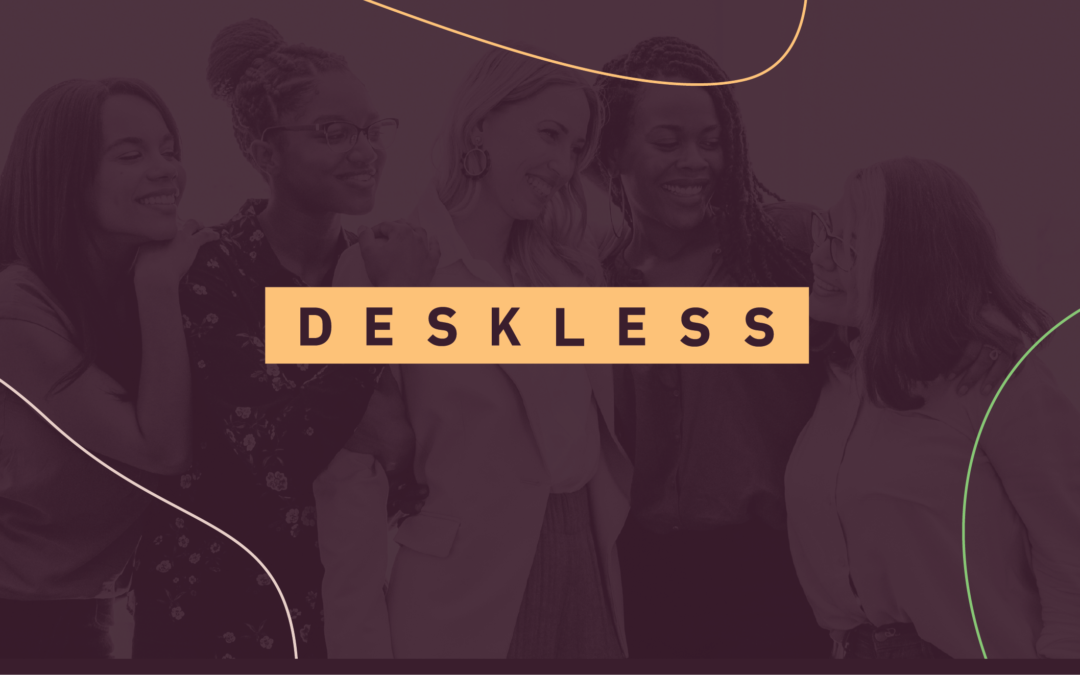
How the ADKAR model can prepare your frontline staff for your next launch
Question: what factor is most important when it comes to planning a new product launch or major promotion?
There are lots of ways to answer this question: a compelling offer. Great branding. Market research. All great answers – but one answer you may have missed is making sure your staff is prepared. Focusing on workforce readiness is crucial when it comes to launching a new product, initiative, or promotion. Planning, marketing, a great product: all of it can crumble without frontline staff who are prepared and consistent across locations.
But how do you actually ensure workforce readiness? In this article we’re going to offer a framework for ensuring workforce readiness by borrowing a model from organizational change management: the ADKAR model.
What is the ADKAR model?
The ADKAR model is a change management methodology developed by the self-described “global team of change fanatics” at Prosci. We all know that change is hard, whether it’s adopting a new habit in our personal lives or shifting the way an organization works. The ADKAR model (alongside Prosci’s other methodologies and frameworks) presents a way of approaching change to ensure success.
ADKAR stands for the five stages of change management in the model: Awareness, Desire, Knowledge, Ability, and Reinforcement. Let’s explore each one:
Awareness
In the ADKAR model, awareness means more than simply being aware that a change is happening. It’s awareness of why change is needed.
There are many factors that make it easy for an employee to not change (inertia, lack of buy in, doubt of the validity). But, according to this model, without awareness of the need to change, employees are more likely to “check out” of training sessions, avoid reading company messaging, or ignore new ways of working.
Desire
The second step of the ADKAR model is desire. You can spend countless hours raising awareness around all the reasons you’re implementing a change, but this model suggests that you won’t necessarily get people invested in actually changing their own actions without desire.
This is the moment at which employees ask that classic question, what’s in it for me? Prosci suggests that motivators for change may include:
- Incentives (a bonus program, or other type of recognition)
- Penalties
- Desire to be a part of something/to belong
- Willingness to follow a trusted leader
- Feeling that the alternative is worse
Knowledge
Once awareness and desire have been addressed, you can move onto knowledge. This is where staff receives information about the knowledge, skills, and behaviors that will be necessary to achieve the desired end outcome.
Psst… Here’s where your communication channels become crucial. Using a digital communication platform (like Nudge!) allows you to share information about an upcoming product launch or organizational change in bite-sized pieces, sent right to their phone. This improves engagement and retention, setting you up for success in the next stage.
Ability
Of course, knowledge alone isn’t enough. Think about riding a bike. You could study bike mechanics, or human physiology. These might be useful topics to have under your belt, but they probably won’t result in a successful first ride. Instead, a new bike rider needs time, practice, coaching, and the right tools in order to learn this new skill.
The same is true for employees putting knowledge into action. To ensure your staff has the ability to use their knowledge in the real world, they must be given time and space to strengthen their confidence and skill.
Reinforcement
Anyone who has ever started a new exercise regime on January 1 knows how easy it is to slip back into old habits by February. That’s why reinforcement is so important when it comes to lasting change. Feedback, accountability, recognition, and rewards are all ways in which managers, leaders and teams can encourage reinforcement.
Preparing frontline staff with the ADKAR model
During the course of the pandemic, frontline staff have already adapted to many changes. The risk of “change fatigue” is real. But as things stabilize, the natural ebb and flow of business is returning. Product launches, sales promotions, holiday seasons, events: all require planning and workforce readiness for your business to meet its goals.
How can understanding the ADKAR model help you to ensure your frontline team is ready to deliver?
1. Focus on buy-in
It’s easy to assume that when a directive comes from up the chain, your deskless workers will fall into line. But this kind of “command and control” management style is not only outdated, it often fails to garner the results you’re looking for.
Imagine you’re launching a new promotion in a retail store. You could send out a memo to all store managers detailing how the promotion will launch, along with step-by-step instructions, which they can reiterate to their staff.
How effective is this method? 🤷♀️
You’ll have some employees following instructions to the letter. Most will participate but may be patchy in delivery and consistency. And some will opt out all together (unless under direct supervision).
Now imagine a different scenario, where instead of sending down a directive from on high, you instead bring frontline employees into the process. You communicate how the promotion will grow the business and help new customers find your business. You involve teams in the planning process, inviting upward feedback from frontline employees on their ideas for sharing the promotion with customers.
This approach is likely to be much more effective because employees will have bought in. You’ve demonstrated that their role in the business is important, their work has meaning, and they are valued for their opinions.
2. Build incentives into your plan
The ADKAR model suggests that both incentives and penalties can be used as methods to build desire among your employees. However, research suggests that incentives are much more effective at motivating action (e.g. bonuses for reaching a sales target of a new product) whereas penalties work better to deter action (e.g. docking pay for chewing gum while working).
When you’re launching a new product or promotion, you want your frontline staff to be active in selling and promoting in order to make your launch a success. So whether it’s leaderboards and shoutouts, or more tangible incentives such as bonuses or a team celebration, finding the right incentives can do wonders to encourage buy-in and program engagement.
And while incentives work to build desire, remember that the ADKAR model also notes that feedback, accountability, recognition, and rewards are all part of how you can reinforce a new way of working too.
3. Make time (and space!) to learn
Giving employees enough time to learn about a new product or promotion is critical to the success of your launch. This means employees need to:
- Know and understand the product or promotion
- Know where to find more information
- Be confident in answering questions
- Use consistent language and messaging
- Be comfortable talking with customers about the product or promotion
Of course, assessing workforce readiness can be a challenge, especially for businesses with multiple locations and high numbers of staff to train. Tools that can help you identify knowledge gaps and warning signs (we know a great one!) make it possible to see where staff are underprepared, and allocate additional support to increase their knowledge and/or ability.
—
When you’re planning a launch, promotion, or event, it can be easy to get stuck at the 50,000 feet view, and lose sight of how each individual frontline member of staff will be involved in making your plans a reality. By using the principles from the ADKAR model, you can drive workforce readiness by adopting the key strategies to keep your staff involved, engaged, and eager to deliver.




